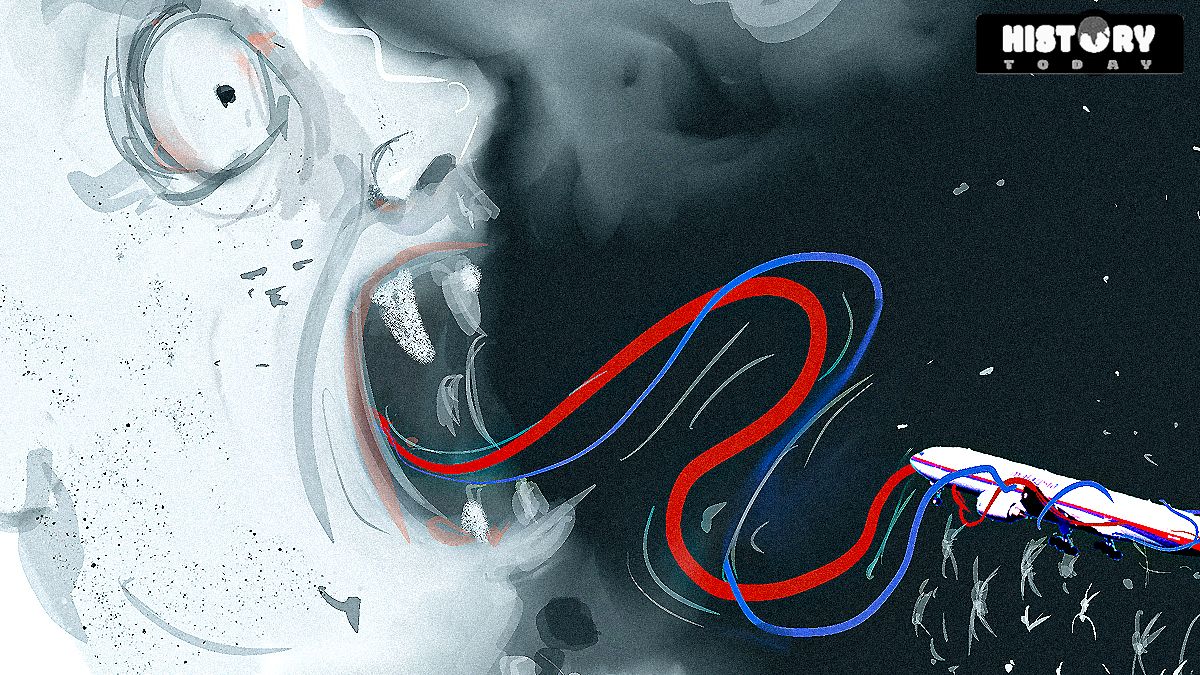March 8, 2014, was a regular day for a lot of people. But, for the relatives of the passengers onboard the Malaysia Airlines flight 370 , it was a tragic day. The flight took off from Kuala Lumpur International Airport at its scheduled time but did not reach its destination, Beijing. And, there is still no trace of the aircraft.
If you are a history geek who loves to learn about important events from the past, Firstpost Explainers’ ongoing series, History Today will be your one-stop destination to explore key events.
The York Stock Exchange (NYSE) was formally created on this day in 1817 when a group of New York brokers established the New York Stock & Exchange Board. In 1979, the compact disc, popularly known as the CD, was presented to the public by Philips and Sony.
Here is all that happened on this day.
Malaysia Airlines Flight 370 disappears into thin air
‘Good night Malaysia, Three Seven Zero’, was the last message that the Kuala Lumpur air traffic control received from Malaysia Airlines Flight 370 . The Boeing 777 took off from the Kuala Lumpur International Airport shortly after midnight on March 8, 2014, with the expectation of reaching its destination Beijing at its expected time of arrival.
The air traffic control in Ho Chi Minh City became concerned when the flight failed to check with them even after entering their airspace. The plane’s transponder, a communication system that transmits the plane’s location to air traffic control, shut down within a few minutes raising confusion among the air traffic controllers.
Military radar saw the plane turn around to travel over the Andaman Sea before it vanished, and satellite data showed it continued to fly for hours, possibly until it ran out of fuel. The plane, carrying 239 people including the crew, is believed to have crashed in a remote part of the southern Indian Ocean.
As the search intensified, dozens of ships and aircraft, representing a multinational effort, were deployed to the South China Sea between Malaysia and Vietnam making this one of the largest and most expensive multinational searches in history.
Ranging from hijacking to loss of oxygen in the cabin to power failure, all kinds of theories have been floated since the disappearance. But nothing could be proved as there was no distress call, no ransom demand, no bad weather or evidence of technical failures.
The New York Stock Exchange formally created
On this day in 1817, the world’s largest stock market, the New York Stock Exchange (NYSE) was formally established. This marked a pivotal moment in financial history. While stock trading in New York had been taking place informally since the Buttonwood Agreement of 1792, it wasn’t until 1817 that brokers created a structured institution known as the New York Stock & Exchange Board (later renamed the NYSE).
At the time, stock trading was disorganized, with brokers conducting business in coffee houses or on Wall Street’s sidewalks. Seeking to create a more regulated and reliable system, a group of brokers met to establish a formal exchange.
They adopted a constitution based on the model of the Philadelphia Stock Exchange, which was already functioning with structured trading rules. The newly formed New York Stock & Exchange Board set up operations at 40 Wall Street, implementing strict membership rules, commission structures and trading regulations to ensure transparency and fairness.
Today, the NYSE remains a cornerstone of global finance, home to some of the world’s largest corporations and a hub for stock trading. Its formal creation on March 8, 1817, laid the foundation for a more organized and efficient financial system, shaping the modern stock market as we know it.
Compact disc presented to the public for the first time
It was on March 8, 1979, that the world was introduced to the groundbreaking new technology - the compact disc, popularly known as CD. In a press conference held in Eindhoven, Netherlands, Philips and Sony publicly demonstrated their groundbreaking invention - the Compact Disc. This revolutionary technology offered a marked improvement over traditional vinyl records and cassette tapes, boasting superior sound quality, greater durability and significantly higher storage capacity.
The concept of digital audio storage had its origins in the late 1960s, with Philips and Sony pursuing separate research on optical disc technology. In the 1970s, they combined their efforts to establish a unified format, leading to the 120mm disc with a 74-minute audio capacity, a choice influenced by the desire to include Beethoven’s Ninth Symphony.
The first commercial CDs and players were launched in Japan in 1982, followed by a global rollout. The format quickly gained popularity, dominating the music industry throughout the 1980s and 1990s. Albums like Billy Joel’s 52nd Street and ABBA’s The Visitors were among the first to be released on CD. Although digital streaming now dominates, the CD’s influence on music history is profound. Its debut on March 8, 1979, ushered in a new era, permanently changing how people accessed and kept their music.
This Day, That Year
On this day in 1942, Japanese troops captured Rangoon, Burma (Yangon, Myanmar) during World War II.
Rioting began on March 8, 1917, in St. Petersburg marking the beginning of the February Revolution and the first stage of the Russian Revolution.


)

)
)
)
)
)
)
)
)



